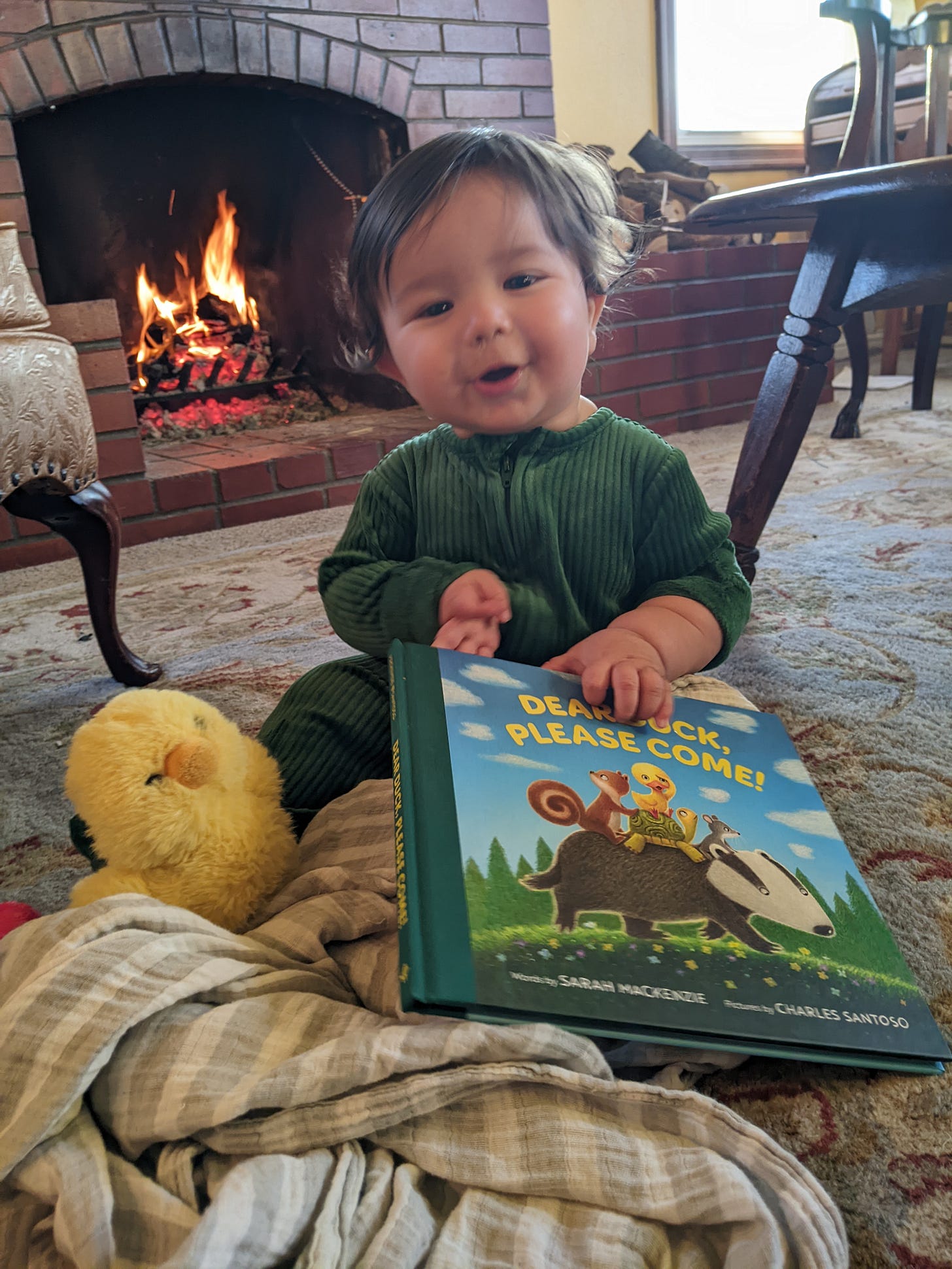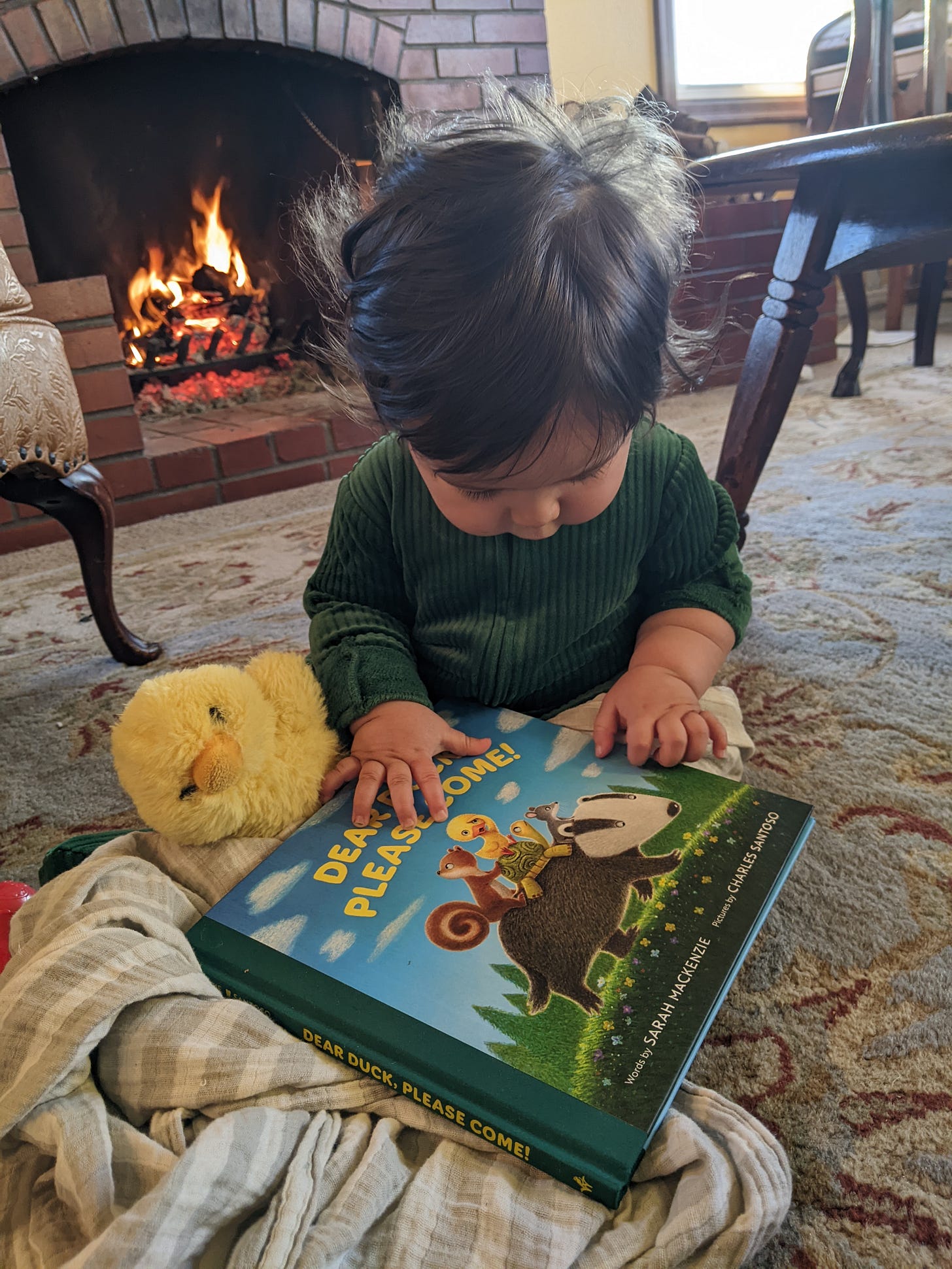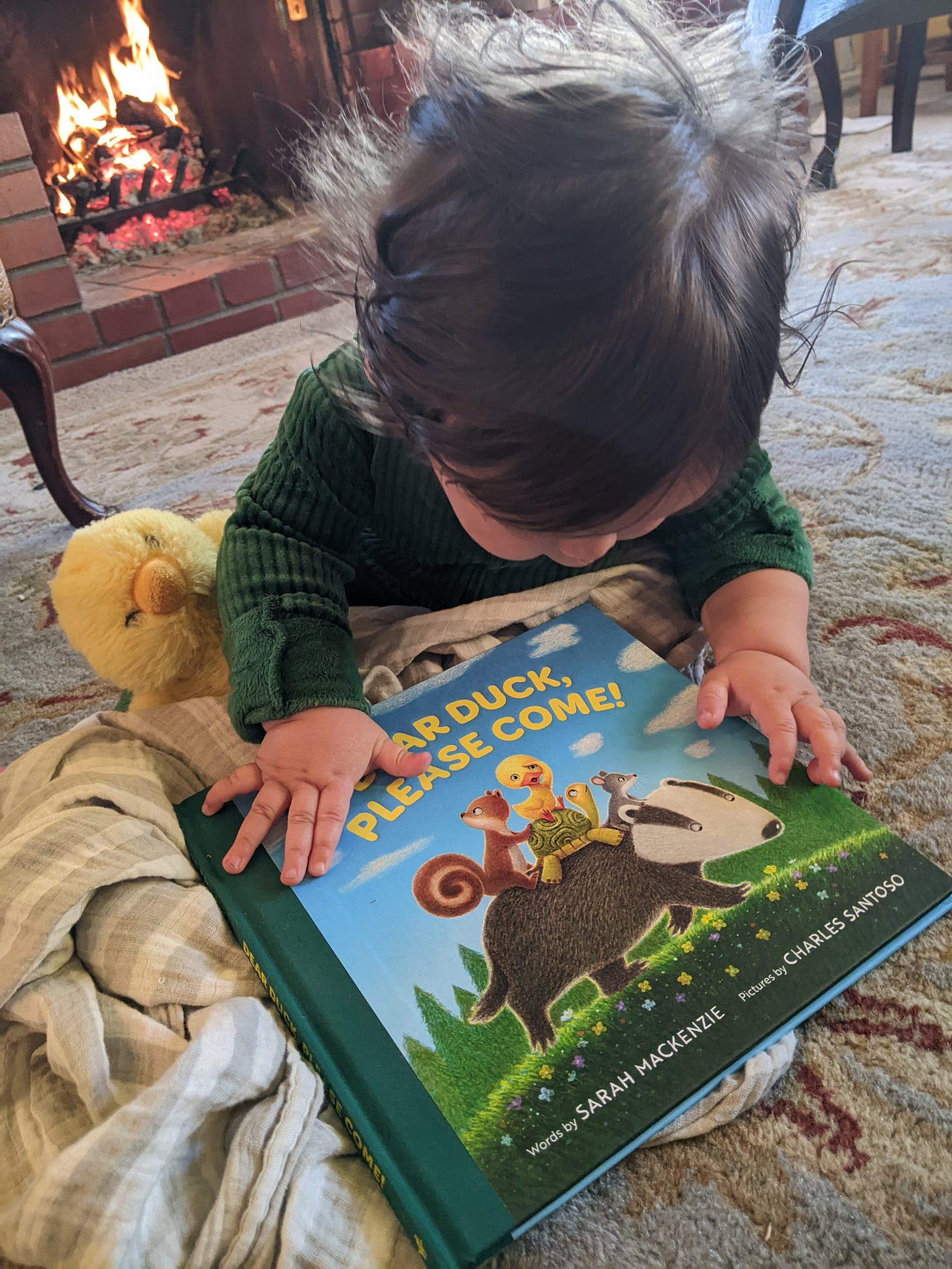"A good-friend thing to do"
A Review of "Dear Duck, Please Come" by Sarah Mackenize
This is a book about friendship.
There is a history to picture books.
The first novel in the English language is generally recognized to be Robinson Crusoe, written by Daniel Defoe in the year 1719. Since then, the novel has gone through various stages of development. G.K. Chesterton believed the Victorian age was the golden age of the English novel, capturing the complexity, the character development, and literary style in the greatest number of occurrences. There were other “golden ages,” and the term can be debated, but that there is a high point of art in society before a period of decline seems reasonable enough to assert.
We are perhaps experiencing a golden age of the illustrated children's book right now. It might sound trite or overly simple, but these picture books are anything but. They are an “art gallery in the lap,” as author and publisher Sarah McKenzie is apt to quote.
Her latest picture book, Dear Duck, Please Come, was released in January after selling out in its first print run by Waxwing Books, a boutique publishing house created by Sarah McKenzie when no publisher would accept her proposal. By assembling the team of her choice, Sarah McKenzie takes what she knows from the history of children's books and does something remarkable.
This is not the first children's book to feature a diverse group of animals with no earthly business consorting with one another and giving them a mission that ends above expected.
Perhaps the best-known version is Henny Penny or Chicken Little, from 1916, in which Henny Penny thinks the sky is falling.
This is also not the first book to share about friendship or being there for one another. We have examples from Arnold Lobel’s Frog and Toad about what it means to be a good friend, which is illustrated through action as the story unfolds.
This is certainly not the first story about a lost tooth.
However, Sarah McKenzie is not copying these older works. Instead, as a student of the history of picture books and what makes them work, Sarah McKenzie is taking admittedly regular ideas for a book and offering us their next evolutionary stage.
The animals are not just helping one another; thanks to illustrator Charles Santoso, their manners bring in some of nature's elements and make a little joke on each page. Watch the munching turtle, his speed and appetite. It takes care that the main character feels for another and adds dramatic facial expressions to convey emotion in a remarkably moving way.
It takes the sing-song language of a picture book and its necessary repetition and adds a good friend sort of thing to do, giving children a language to guide their actions, a standard by which to judge what they are doing. Is this a good friend sort of thing to do?
It offers us an unexpected ending with a lesson about assumptions.
The book is an absolute joy.
When they opened the first page, my husband said, “There’s were no AI-generated images there!”
In fact, what appears to my untrained eyes as colored pencil rendering vibrant, engaging illustrations gives the book a sense of place, a sense of realness. Its textured shades are badly needed as more and more of our computer graphics are AI-generated in the public square.
Santoso used the digital medium ProCreate to make these pieces of art and joy. ProCreate functions like traditional materials in the digital spheres. He used a mix of colored pencil and watercolor and a hefty dose of love and imagination in the drawings of Dear Duck, Please Come. As he said in an interview with Sarah Mackenzie, when all the elements of a picture book come together, “it’s just magic.”
This book feels personal, and while I admire the watercolor and oil painting illustrations we see in so many works of children's literature, this particular medium felt more personal to my children.
Colored pencil is their chosen instrument for art. Here, we learned something about mixing color and shade.
But, it should be said the drawings themselves are anything but amateurish.
I am already gifting this book to another. It is too good not to share. I hope you take the chance to take a look yourself at the Dear Duck, Please Come.





